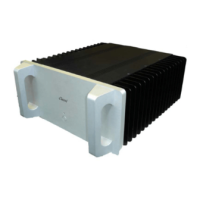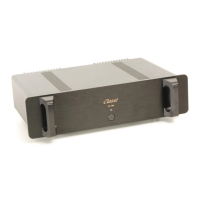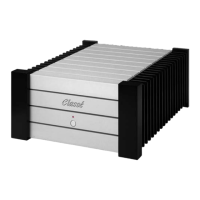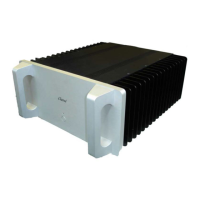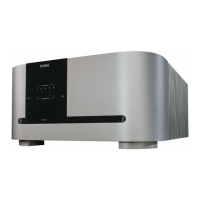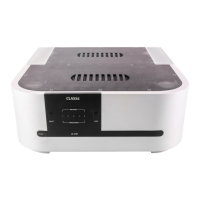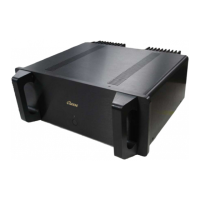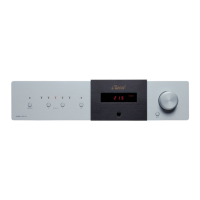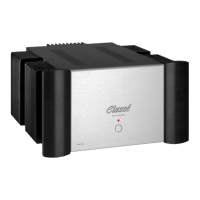Do you have a question about the Classe Audio CA-2200 and is the answer not in the manual?
Guidance on system installation and dealer recommendation for optimal performance.
Instructions for safely removing the amplifier from its packaging and handling.
Advice on positioning the amplifier for optimal performance and cable management.
Specifies necessary clearances for proper airflow and heat dissipation.
Location of the serial number and instructions for product registration.
Details on the amplifier's factory voltage setting and its importance.
Encouragement to read the manual for proper setup and benefit realization.
Explanation of the optimized analog amplification stages developed over years.
Details the process of fine-tuning circuitry through subjective listening tests for musical results.
Describes protection circuits safeguarding the amplifier and loudspeakers from fault conditions.
Explains the function of the standby button and how the LED indicates the amplifier's state.
Explains the meaning of channel LEDs for input type and fault conditions.
Describes how the Mode button is used for configuration and control.
Describes balanced audio inputs, their benefits, and recommendation for use.
Explains single-ended RCA connections and their performance characteristics.
Details speaker output terminals and the concept and benefits of bi-wiring.
Information on RJ-45 connectors for future control and communication via CAN-Bus.
Describes mini-jacks for IR remote control support and signal daisy-chaining.
Explains DC control voltage for automatic switching between operate and standby.
Details the RS-232 connector for software updates and external control systems.
Instructions for connecting AC power and locating the AC mains fuse.
Step-by-step guide to setting the amplifier's input type using front panel buttons.
Instructions for configuring turn-on delay and unique IDs for multi-amplifier systems.
Introduces the capabilities and benefits of the CAN-Bus system for Delta series components.
Details required components like network cables, terminators, and interface boxes.
Specifies the type and quantity of network cables needed for CAN-Bus connections.
Explains the purpose and use of CAN-Bus terminators and interface boxes.
Guide on accessing and navigating the CAN-Bus system via touchscreen controls.
Allows setting names, global brightness, and global standby for system components.
Controls the target unit's standby state and mute function via the CAN-Bus interface.
Displays electrical supply sensor data for the target unit.
Provides essential information like model, software version, and serial number.
Enables setting custom names for components within the CAN-Bus device screen.
Enables automatic input switching on preamps/processors when disc playback starts.
Records events that trigger the amplifier's protection circuitry, aiding troubleshooting.
Guidelines for cleaning the amplifier cabinet using approved materials.
Addresses issues with no sound output or inactive channel LEDs.
Explains causes and solutions for blinking red channel LEDs indicating protection mode.
Discusses reasons for the amplifier shutting off, including ventilation and protection mode.
Detailed procedure for identifying, replacing, and testing the AC mains fuse.
Troubleshooting steps for when both Standby and Channel LEDs are flashing.
Details power output, frequency response, signal-to-noise, and distortion.
Covers voltage gain, impedance, power consumption, dimensions, and weight.
Provides detailed diagrams and measurements of the amplifier's physical size.
| Power Output (8 Ohms) | 200 W |
|---|---|
| Signal-to-Noise Ratio | > 100 dB |
| Output Power (4 Ohms) | 400 W |
| Gain | 29 dB |
| Input Sensitivity | 1.5 V |
| Frequency Response | 20 Hz - 20 kHz |
| Dimensions | 17.5 x 15 x 5.5 inches |
| Damping Factor | 200 |

